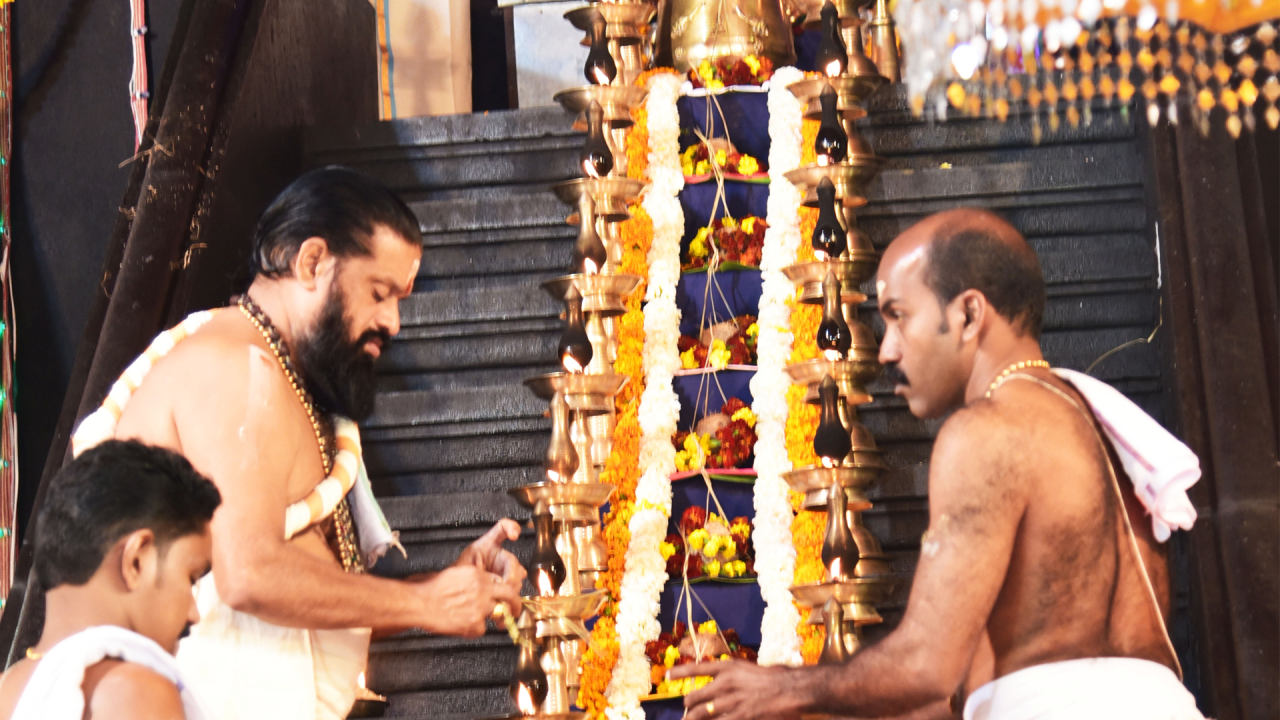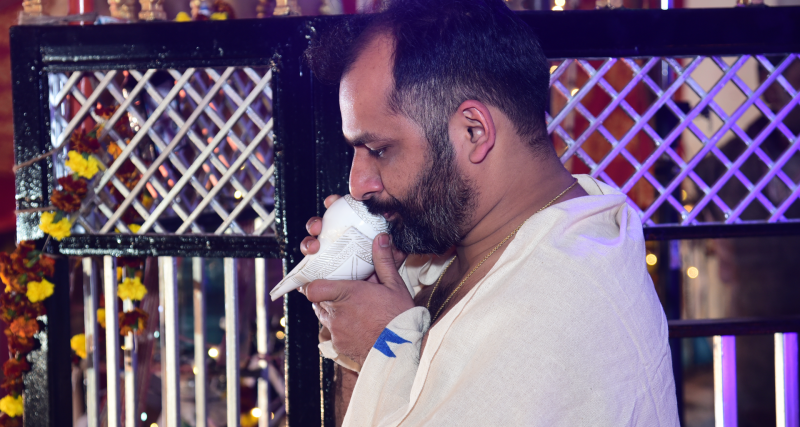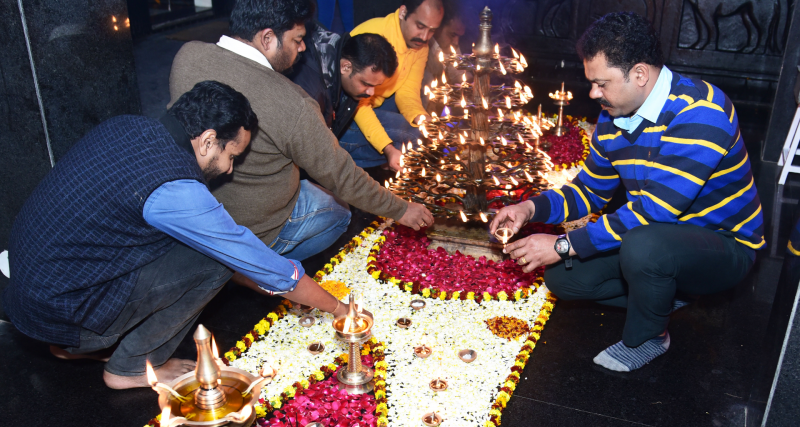Pathinettapadi (18 divine steps) to the sanctum sanctorium is divine in all aspects. Every Ayyappa devotee, before he sees the Sanctum Sanctorum, has to lay his footsteps over eighteen sacred steps. Initially the 18 steps were made of granite. It was later covered with Panchaloha (a special composition of gold, silver, copper, iron and tin), in the year 1985 to prevent it from deterioration. Pilgrims initiate their ascent up the Pathinettam Padi by placing their right foot on the first step. As per the tradition, only those who undertake the penance for 41 days and those who carry the irumudi on their head are allowed to use the steps.
The symbolism of these 18 steps is as follows:
The first five steps symbolise the five human senses (Panchendriyas) i.e. visual (vision), auditory (hearing), olfactory (smell), gustatory (taste) and tactile (touch). These signify the `mortal’ nature of one’s body.
The next eight steps symbolise the eight Ashtaragas viz, Kama, Krodha, Lobha, Moha, Madha, Maltsarya, Asooya, Dhumb (Love, Anger, Avarice, Lust, Pride, Unhealthy Competition, Jealousy and Boastfulness).
The next three steps stand for three Gunas or Thrigunas (nature-born qualities) i.e. Satva,
( perspicuity, discernment) , Rajas (activity, enjoyment) and Thamas (inactivity, stupor).
The last two steps represent Vidya (Knowledge) and Avidya (Ignorance).
It is assumed that after climbing up these eighteen steps reverently, one symbolically detaches oneself from all the worldly ties that bind one physically and mentally to the world. It is only then that a person will be in a receptive condition to be ‘one’ in consonance with the concept of ‘The Ultimate Creator’.
The above are the most prevalently accepted version of the significance of the Holy 18 steps. Other versions are as follows:
Ayyappa was a master of 18 weapons and the steps signify these. Ayyappa before merging into the idol at the Sanctum Sanctorum, surrendered his 18 weapons, one at each step of Pathinettam Padi.
The steps represent the 18 hills existing in and around the region of Sabarimala.Ponnambalamedu, Gowdenmala, Nagamala, Sundaramala, Chittambalamala, Khalgimala, Mathangamala, Myladummala, Sreepadamala, Devarmala, Nilakkalmala, Thalapparamala, Neelimala, Karimala, Puthuserrymala, Kalakettimala, Inchipparamala and Sabarimala.
Eighteen is considered as the code number to break into the soul of the Nature. The significance of 18 can be traced back to the Vedic age. The first Veda, believed to be protected by Lord Brahma himself, had 18 chapters. Later, Veda Vyasa divided it to create the four vedas: Rigveda, Yajur Veda, Sama Veda and Atharava Veda. Each of these vedas had 18 chapters.Veda Vyasa also wrote 18 puranas and 18 upa-puranas. The Bhagavad Gita has 18 chapters and the Kurukshetra war lasted 18 days.
There are many mythological stories associated with the holy Patinettampadi. Some believe the eighteen steps denotes the 18 puranas. Some believe that the first three steps depict “Bhoomi, Agni, Vayoo & Akash”, 6 to 9 steps for Karmendriya, 10 to 15 for Jhanandriya, 16th for mind 17th Intelligence and 18th Jeevathma Bhava. Those who cross all these steps are believed to achieve “Punyadarshan”.
The steep steps are so important and holy that no one can climb them without fasting for 41 days and carrying the holy irrumudi on ones’ head. Before ascending or descending the steps, pilgrims break coconut as an offering to the steps. One needs to have the sacre Irumudi on head while going up or down the 18 steps. While descending the steps the devotees climb down backwards facing the sanctum sanctorum.
One who climbs the Patinettampadi for 18 times shall plant coconut sapling in Sabarimala.
Built on a plateau about 40 feet high, the Ayyappan temple commands a lofty view of the mountains and valleys all around.




